Sensorless Voltage Observer for a Current-Fed High Step-Up DC-DC Converter Using Extended Kalman Filter
Abstract
1. Introduction
- Kalman filter (KF): KF is applied to the linear systems, therefore its accuracy is limited to the operating point at which the converter can be modelled as a linear system.
- Unscented Kalman filter (UKF): UKF is suitable for a highly nonlinear system. UKF uses unscented transformation (UT) to pick a minimal set of sample points around the mean value. It is used only in the cases that the extended Kalman filter can give particularly poor performance. In the paper, it is shown that EKF has an appropriate performance to estimate the converter voltage.
- Low and uniform stress per stage on diodes and capacitors.
- Wide range of multiplication stages is achieved.
- Compactness, low weight, and cost-efficiency.
- Negative output through reversing diode polarity.
- Low input current ripple.
- Providing a part of the voltage gain by the current-fed circuit.
2. Mathematical Model of the Converter
2.1. Control Structure of the System
2.2. The Precise Model of the Converter
- RLs: parasitic resistance of inductor Ls;
- RL1: resistance of the transformer primary winding;
- RDS: On-state resistance of the MOSFETs;
- R’L2: secondary winding resistance of the transformer;
- R′D: conduction resistance of the diodes;
- V′D: forward voltage drop of diodes;
- R′Cb: equivalent series resistances (ESR) of capacitor Cb;
- R′Co: equivalent series resistances (ESR) of capacitor Co.
3. Proposed Voltage Estimation Strategy
- Requiring the accurate model of the converter. Some parameters that are not easy to be included in the model may affect the accuracy of the model: such as life derating of passive elements, frequency dependency of winding resistance, the nonlinearity of diode voltage drop and switch conduction resistance.
- Computational budgetary: In every computational step of the EKF algorithm, the non-linear equations of the system model are linearized. Compared to the conventional system (using a voltage sensor), this method requires computation and estimation of the voltage value. Therefore, a digital processor is necessary to be employed in this technique.
4. Simulation & Experimental Results
- Good consistency in the transient response of the actual and estimated results validates the derived dynamic model. Both results show the same settling time of 22 ms. The steady-state error of the estimated output voltage is 3% (1.5 V) for the ideal converter and 0.2% (0.1 V) for the non-ideal converter. The accurate model (including parasitic elements) is used for both simulations; therefore, the model is not accurate in ideal simulation, and this is the main reason for the greater error in Figure 6b.
- Low variations of the estimated voltage (lower than 0.8 V) demonstrates that the proposed observer has filtered the measurement noise significantly.
- The converter is used to feed a resistive load. The value of load resistance is 270 Ω. The gating pulses are shown in Figure 11. In order to provide the required output voltage (50 V), the duty cycle is controlled to 45%. In addition, to provide safe commutation states, a sufficient overlap time (equal to 1 μs.) is considered for gating pulses. It is worth mentioning the state that both switches are off should be avoided [31]. The input voltage and CWVM voltage (VCW) of the converter are shown in Figure 12.
- The current values of inductors are measured and a table of data for inductor currents are provided.
- Using the practical measurements and presented observer, the output voltage is estimated and compared to the experimental result.
5. Conclusions
Author Contributions
Funding
Conflicts of Interest
References
- Grass, N.; Hartmann, W.; Klockner, M. Application of Different Types of High-Voltage Supplies on Industrial Electrostatic Precipitators. IEEE Trans. Ind. Appl. 2004, 40, 1513–1520. [Google Scholar] [CrossRef]
- Soeiro, T.; Biela, J.; Linner, J.; Ranstad, P.; Kolar, J. Line power quality improvement for pulsed Electrostatic Precipitator systems. In Proceedings of the 2010 International Power Electronics Conference—ECCE ASIA, Sapporo, Japan, 21–24 June 2010. [Google Scholar]
- Gavin, S.; Paolone, M.; Biner, H.; Ecoeur, P.; Louokdom, E.; Carpita, M. A Digitally Controlled 125 kVdc, 30 kW Power Supply with an LCC Resonant Converter Working at Variable DC-link Voltage: Full Scale Prototype Test Results. In Proceedings of the 7th IET International Conference on Power Electronics, Machines and Drives (PEMD 2014), Manchester, UK, 8–10 April 2014. [Google Scholar]
- Park, Y.; Jung, B.; Choi, S. Nonisolated ZVZCS Resonant PWM DC–DC Converter for High Step-Up and High-Power Applications. IEEE Trans. Power Electron. 2012, 27, 3568–3575. [Google Scholar] [CrossRef]
- Soeiro, T.B.; Mühlethaler, J.; Linnér, J.; Ranstad, P.; Kolar, J.W. Automated Design of a High-Power High-Frequency LCC Resonant Converter for Electrostatic Precipitators. IEEE Trans. Ind. Electron. 2013, 60, 4805–4819. [Google Scholar] [CrossRef]
- Bulut, Y. Applied Kalman Filter Theory; Northeastern University: Boston, MA, USA, 2011. [Google Scholar]
- Alsofyani, I.M.; Idris, N.R.N. Lookup-table-based DTC of induction machines with improved flux regulation and extended Kalman filter state estimator at low-speed operation. IEEE Trans. Ind. Inform. 2016, 12, 1412–1425. [Google Scholar] [CrossRef]
- Singh, M. Extended Kalman Filter based Speed Estimation for the Control of PMSG. In Proceedings of the IEEE 15th Brazilian Power Electronics Conference and 5th IEEE Southern Power Electronics Conference (COBEP/SPEC), Santos, Brazil, 1–4 December 2019; pp. 1–6. [Google Scholar]
- Ouhrouche, M.; Errouissi, R.; Trzynadlowski, A.M.; Tehrani, K.A.; Benzaioua, A. A novel predictive direct torque controller for induction motor drives. IEEE Trans. Ind. Electron. 2016, 63, 5221–5230. [Google Scholar] [CrossRef]
- Ortatepe, Z.; Karaarslan, A. Extended Kalman Filter Design for Model Predictive Current Controlled DFIG. In Proceedings of the 11th International Conference on Electrical and Electronics Engineering (ELECO), Bursa, Turkey, 28–30 November 2019; pp. 305–310. [Google Scholar]
- Salvatore, L.; Stasi, S.; Tarchioni, L. A new EKF-based algorithm for flux estimation in induction machines. IEEE Trans. Ind. Electron. 1993, 40, 496–504. [Google Scholar] [CrossRef]
- Janiszewski, D. Extended Kalman filter based speed sensorless PMSM control with load reconstruction. In Proceedings of the IECON 2006—32nd Annual Conference on IEEE Industrial Electronics, Paris, France, 6–10 November 2006; pp. 1465–1468. [Google Scholar]
- Quang, N.K.; Hieu, N.T.; Ha, Q.P. FPGA-based sensorless PMSM speed control using reduced-order extended Kalman filters. IEEE Trans. Ind. Electron. 2014, 61, 6574–6582. [Google Scholar] [CrossRef]
- Xu, D.; Zhang, S.; Liu, J. Very-low speed control of PMSM based on EKF estimation with closed loop optimized parameters. ISA Trans. 2013, 52, 835–843. [Google Scholar] [CrossRef]
- Aydogmus, Z.; Aydogmus, O. A comparison of artificial neural network and extended Kalman filter based sensorless speed estimation. Measurement 2015, 63, 152–158. [Google Scholar] [CrossRef]
- Gauterin, E.; Kammerer, P.; Kühn, M.; Schulte, H. Effective wind speed estimation: Comparison between Kalman filter and Takagi–Sugeno observer techniques. ISA Trans. 2016, 62, 60–72. [Google Scholar] [CrossRef]
- Singleton, R.K.; Strangas, E.G.; Aviyente, S. Extended Kalman filtering for remaining-useful-life estimation of bearings. IEEE Trans. Ind. Electron. 2015, 62, 1781–1790. [Google Scholar] [CrossRef]
- Beccuti, A.G.; Mariethoz, S.; Cliquennois, S.; Wang, S.; Morari, M. Explicit model predictive control of DC-DC switched-mode power supplies with extended Kalman filtering. IEEE Trans. Ind. Electron. 2009, 56, 1864–1874. [Google Scholar] [CrossRef]
- Geyer, T.; Papafotiou, G.; Frasca, R.; Morari, M. Constrained optimal control of the step-down DC-DC converter. IEEE Trans. Power Electron. 2008, 23, 2454–2464. [Google Scholar] [CrossRef]
- Karamanakos, P.; Geyer, T.; Manias, S. Direct voltage control of DC-DC boost converters using model predictive control based on enumeration. In Proceedings of the Power Electronics and Motion Control Conference (EPE/PEMC), Novi Sad, Serbia, 4–6 September 2012; pp. 10–18. [Google Scholar]
- Geyer, T.; Papafotiou, G.; Morari, M. Hybrid model predictive control of the step-down DC-DC converter. IEEE Trans. Contr. Syst. Technol. 2008, 16, 1112–1124. [Google Scholar] [CrossRef]
- Rigatos, G.G.; Siano, P.; Zervos, N.; Cecati, C. Derivative-free nonlinear Kalman Filtering for control of three-phase voltage source converters. In Proceedings of the Industrial Electronics Society, IECON 2013—39th Annual Conference of the IEEE, Vienna, Austria, 10–13 November 2013; pp. 7598–7603. [Google Scholar]
- Bensaid, R.; Fadel, M. Floating voltages estimation in three-cell converters using a discrete-time Kalman filter. In Proceedings of the 2001 IEEE 32nd Annual Power Electronics Specialists Conference, PESC, Vancouver, BC, Canada, 17–21 June 2001; pp. 327–332. [Google Scholar]
- Abushafa, O.; Gadoue, S.; Dhaidah, M.; Aktinson, D. Capacitor voltage estimation in modular multilevel converters using a Kalman filter algorithm. In Proceedings of the IEEE International Conference on Industrial Technology (ICIT), Seville, Spain, 17–19 March 2015; pp. 3016–3021. [Google Scholar]
- Li, N.; Lin-Shi, X.; Lefranc, P.; Godoy, E.; Jaafar, A. FPGA based sliding mode control for high frequency SEPIC. In Proceedings of the IEEE International Symposium on Industrial Electronics, Gdansk, Poland, 27–30 June 2011; pp. 1575–1580. [Google Scholar]
- Tong, Q.; Chen, C.; Zhang, Q.; Zou, X. A sensorless predictive current controlled boost converter by using an EKF with load variation effect elimination function. Sensors 2015, 15, 9986. [Google Scholar] [CrossRef] [PubMed]
- Abdelsalam, M.; Tennakoon, S.; Diab, H.; Marei, M.I. An ADALINE based capacitor voltage estimation algorithm for modular multilevel converters. In Proceedings of the 2016 19th International Symposium on Electrical Apparatus and Technologies (SIELA), Bourgas, Bulgaria, 29 May–1 June 2016; p. 2. [Google Scholar] [CrossRef]
- Islam, M.D.; Razzaghi, R.; Bahrani, B. Arm-Sensorless Sub-Module Voltage Estimation and Balancing of Modular Multilevel Converters. IEEE Trans. Power Deliv. 2020, 35, 957–967. [Google Scholar] [CrossRef]
- Galarza, J. Study of the estimated capacitor voltage by kalman filter for a modular multi-level converter. In Proceedings of the 2019 IEEE XXVI International Conference on Electronics, Electrical Engineering and Computing (INTERCON), Lima, Peru, 12–14 August 2019. [Google Scholar] [CrossRef]
- Kaniewski, P. Extended Kalman filter with reduced computational demands for systems with non-linear measurement models. Sensors 2020, 20, 1584. [Google Scholar] [CrossRef]
- Rajaei, A.; Khazan, R.; Mahmoudian, M.; Mardaneh, M.; Gitizadeh, M. A Dual Inductor High Step-Up DC/DC Converter Based on the Cockcroft–Walton Multiplier. IEEE Trans. Power Electron. 2018, 33, 9699–9709. [Google Scholar] [CrossRef]
- Müller, L.; Kimball, J.W. High Gain DC–DC Converter Based on the Cockcroft–Walton Multiplier. IEEE Trans. Power Electron. 2016, 31, 6405–6415. [Google Scholar] [CrossRef]
- Mantovanelli, P.; Barbi, I. A new current-fed, isolated PWM DC-DC converter. IEEE Trans. Power Electron. 1996, 11, 431–438. [Google Scholar] [CrossRef]
- Loncarski, J.; Monopoli, V.G.; Cascella, G.L.; Cupertino, F. SiC-MOSFET and Si-IGBT-Based dc-dc interleaved converters for EV chargers: Approach for efficiency comparison with minimum switching losses based on complete parasitic modeling. Energies 2020, 13, 4585. [Google Scholar] [CrossRef]
- Biswas, A.; Kar, M.; Mandal, P. Techniques for reducing parasitic loss in switched-capacitor based DC-DC converter. In Proceedings of the 2013 Twenty-Eighth Annual IEEE Applied Power Electronics Conference and Exposition (APEC), Long Beach, CA, USA, 17–21 March 2013; pp. 2023–2028. [Google Scholar] [CrossRef]
- Bachouch, L.; Bouslimi, L.; Amraoui, L. El Power losses minimization in the SEPIC DC-DC converter using Particle Swarm Optimization technique (PSO). In Proceedings of the 19th International Conference on Sciences and Techniques of Automatic Control and Computer Engineering (STA), Sousse, Tunisia, 24–26 March 2019; pp. 388–393. [Google Scholar] [CrossRef]
- Axelrod, B.; Berkovich, Y.; Ioinovici, A. Cascade Cockcroft—Walton Voltage Multiplier Applied to Transformerless High. IEEE Trans. Ind. Electron. 2003, 3, 523–537. [Google Scholar]
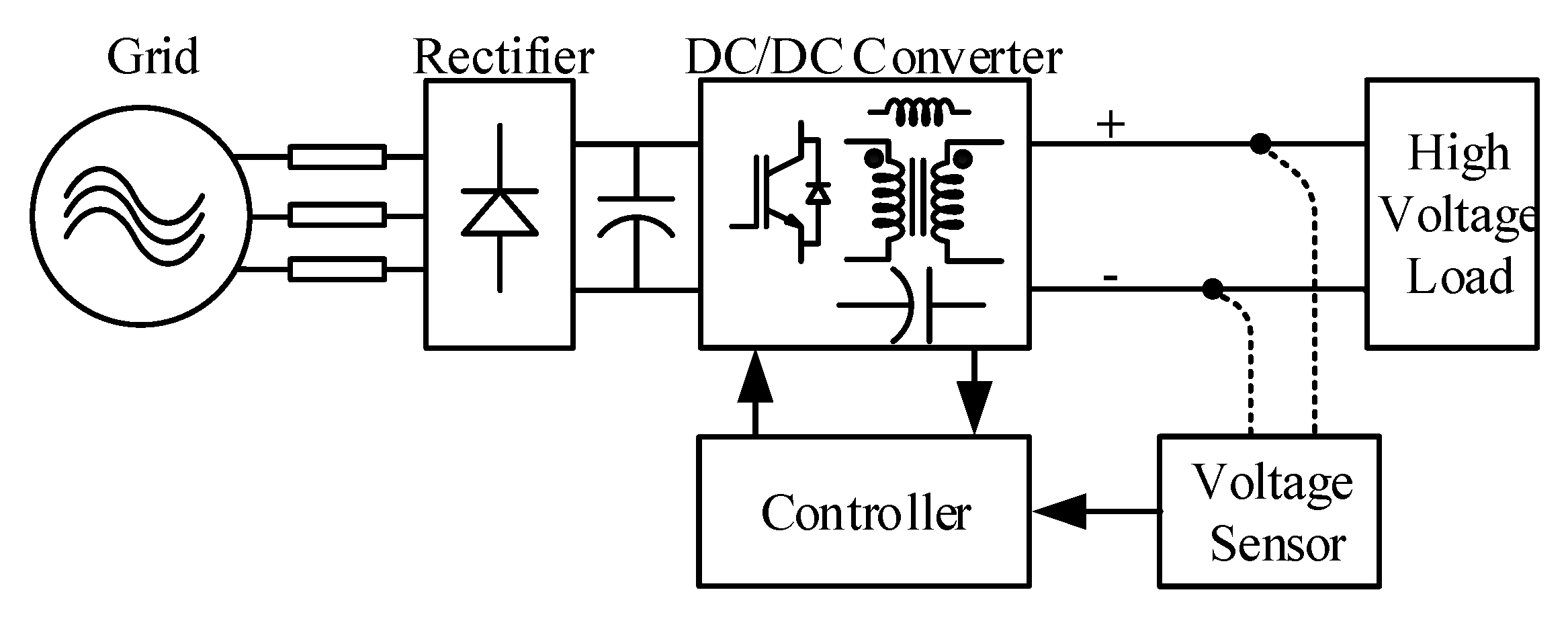

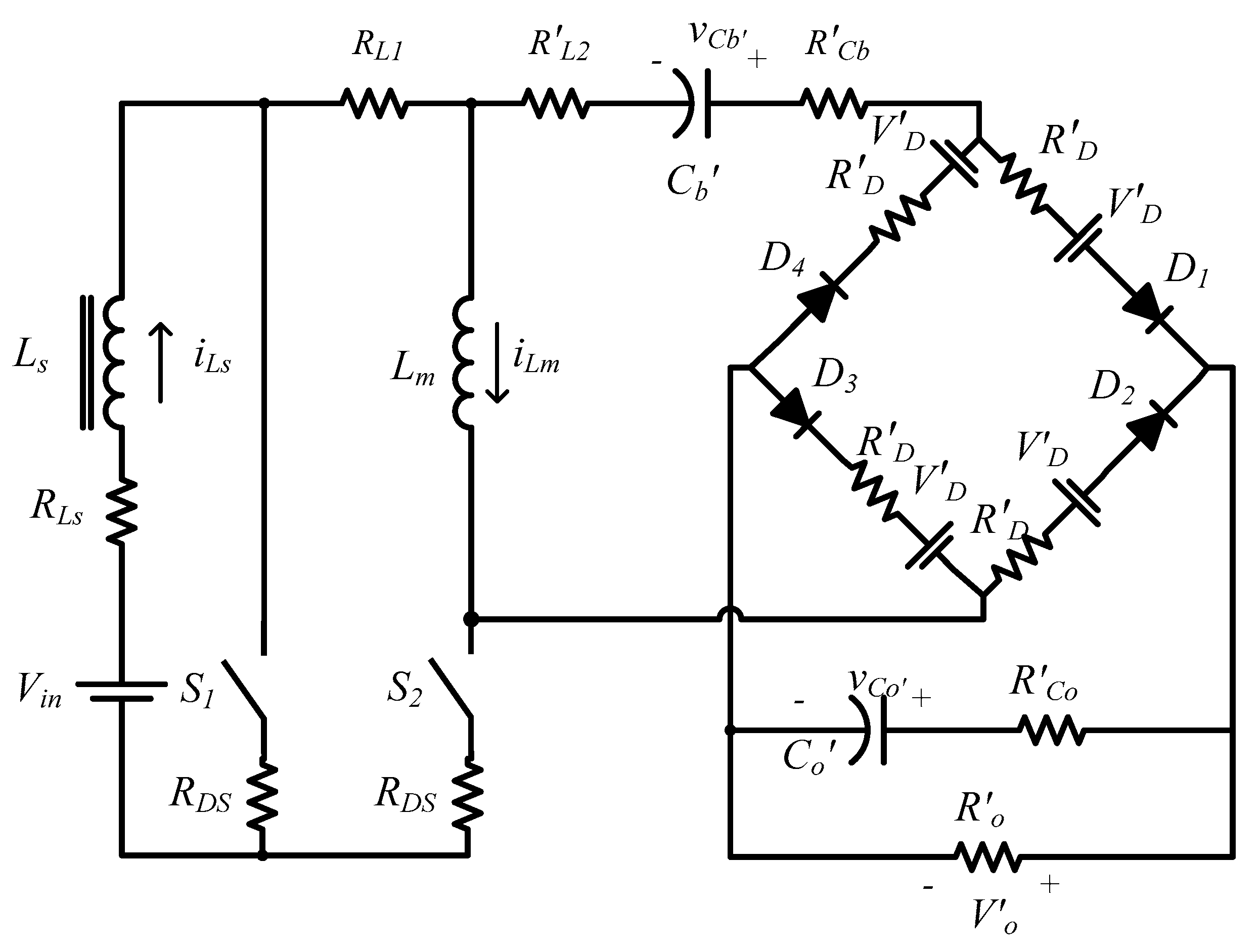
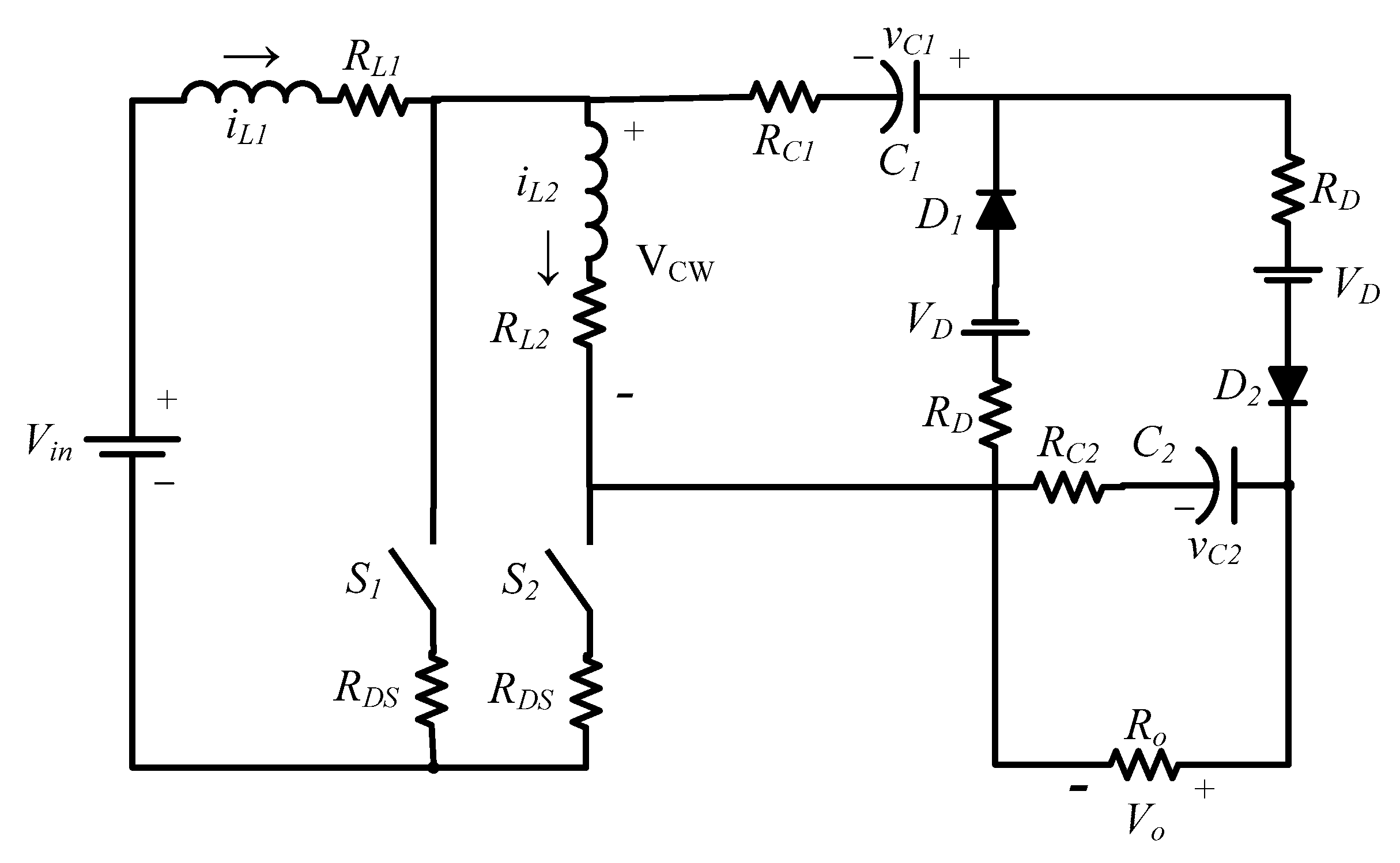
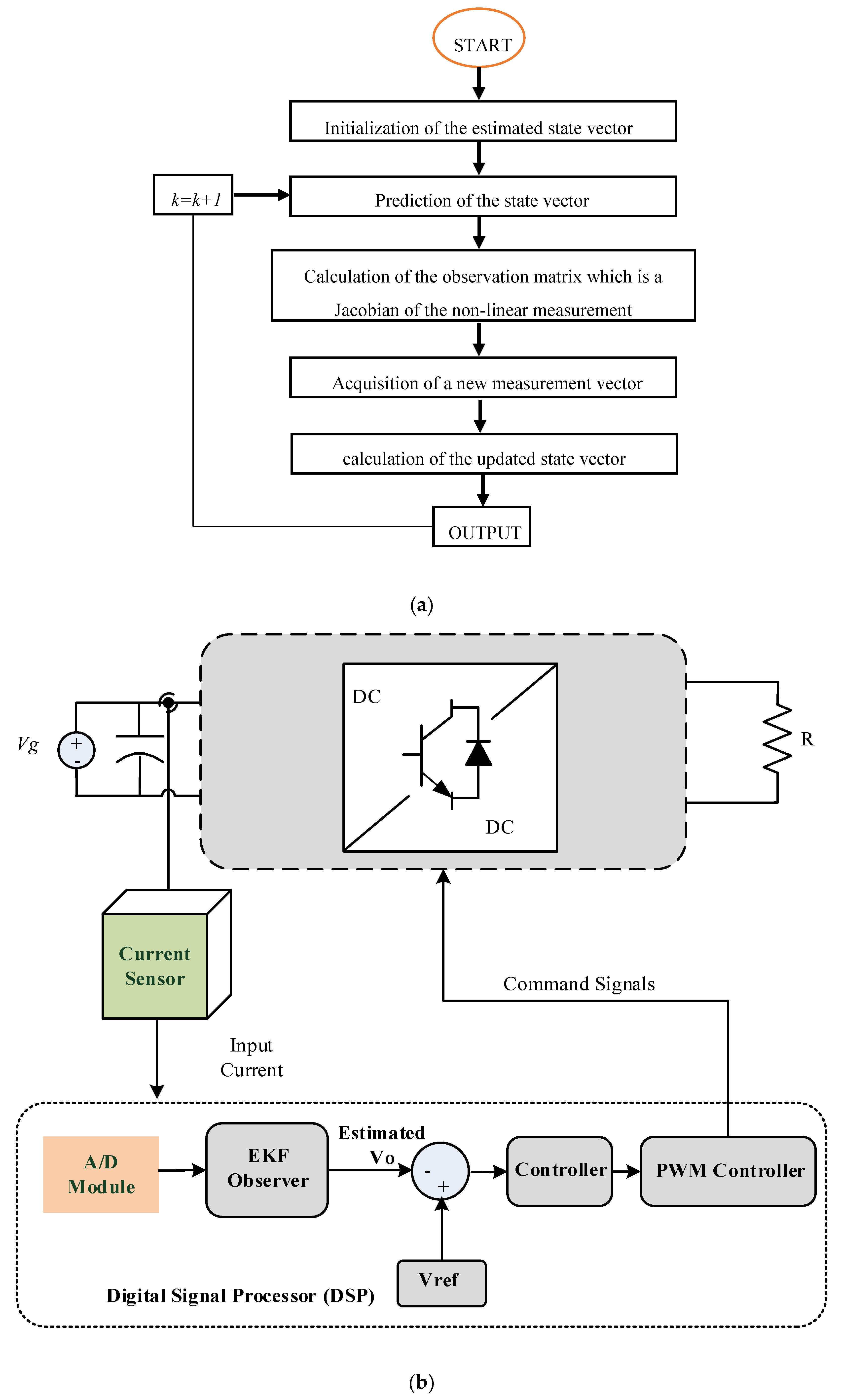
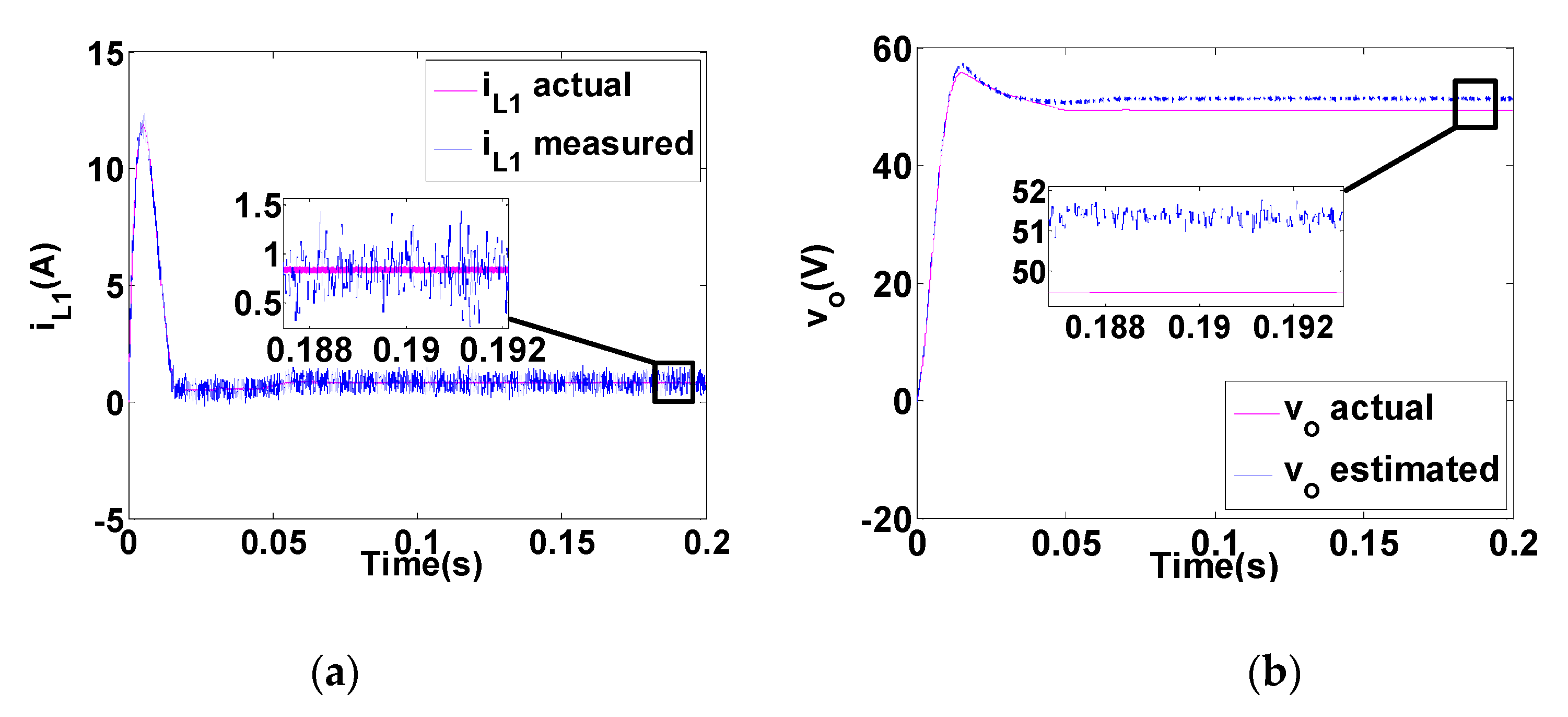
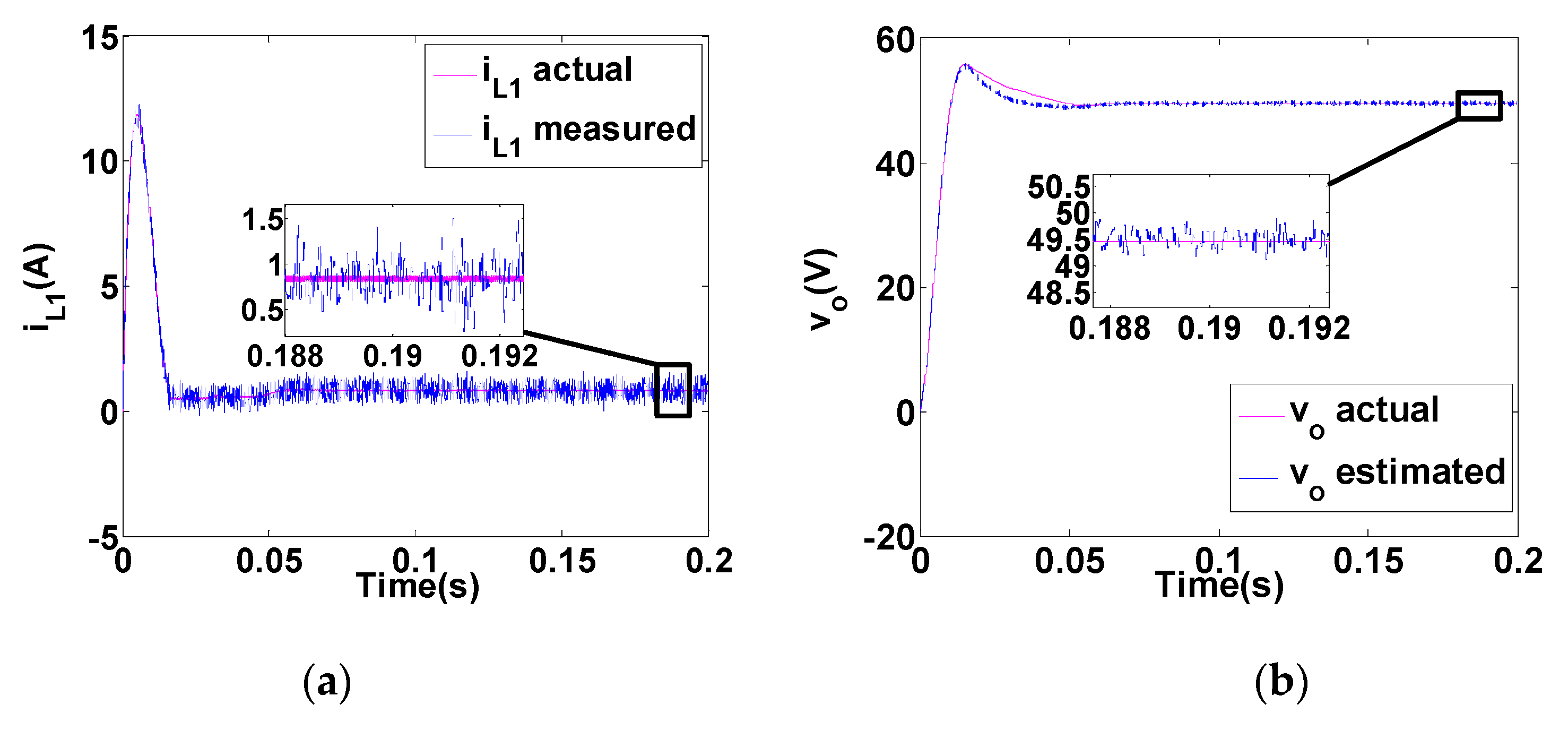

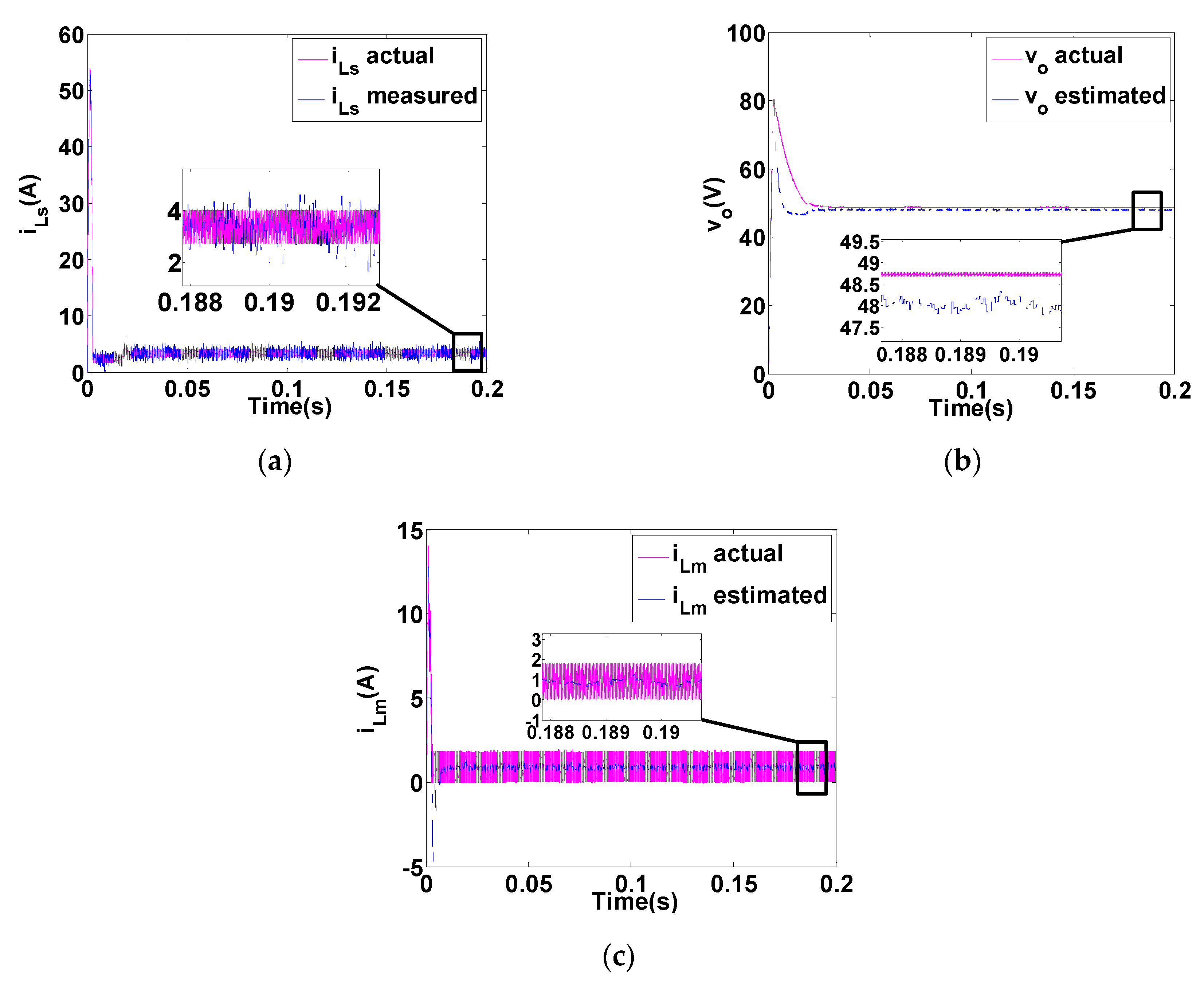
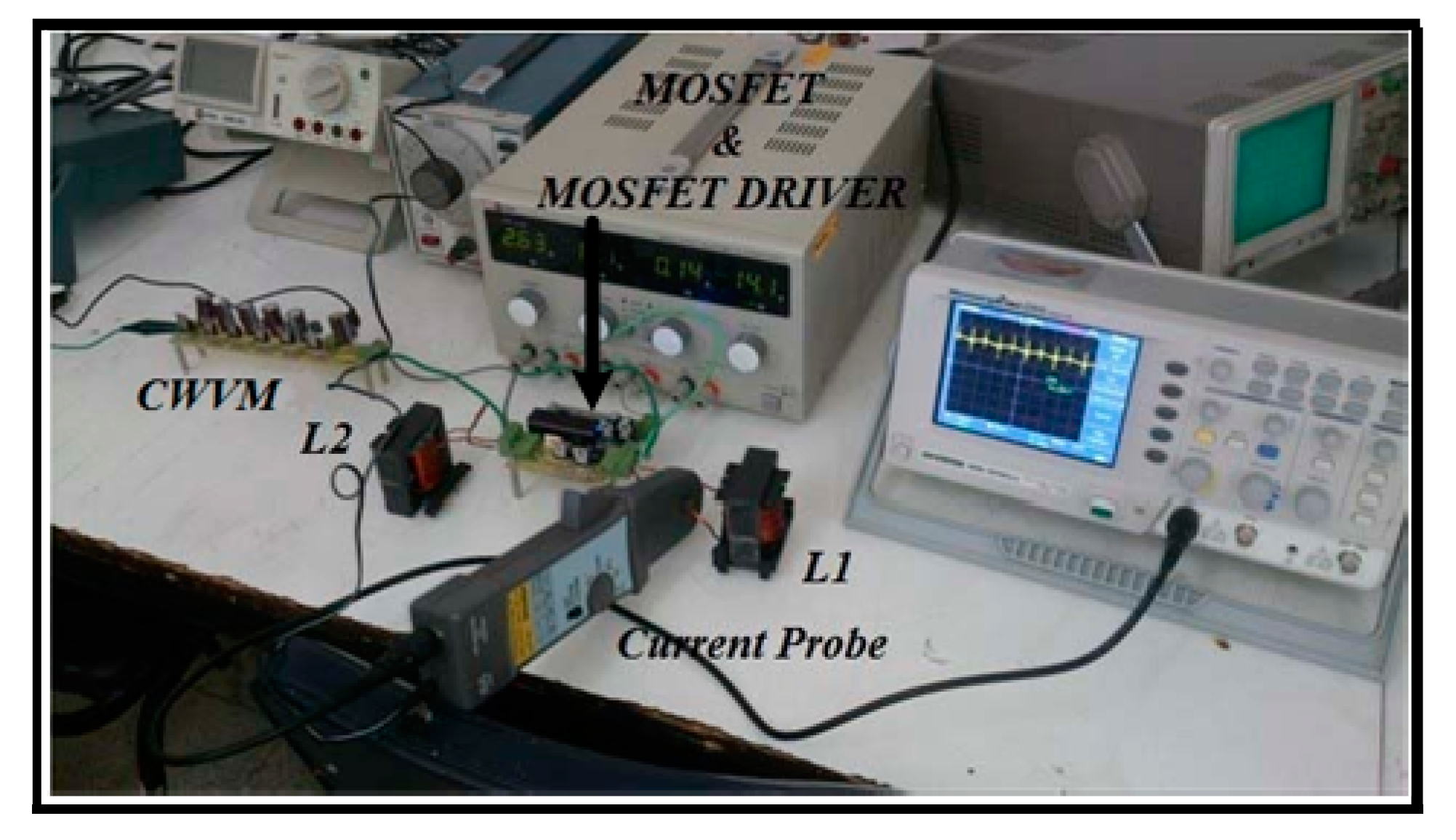
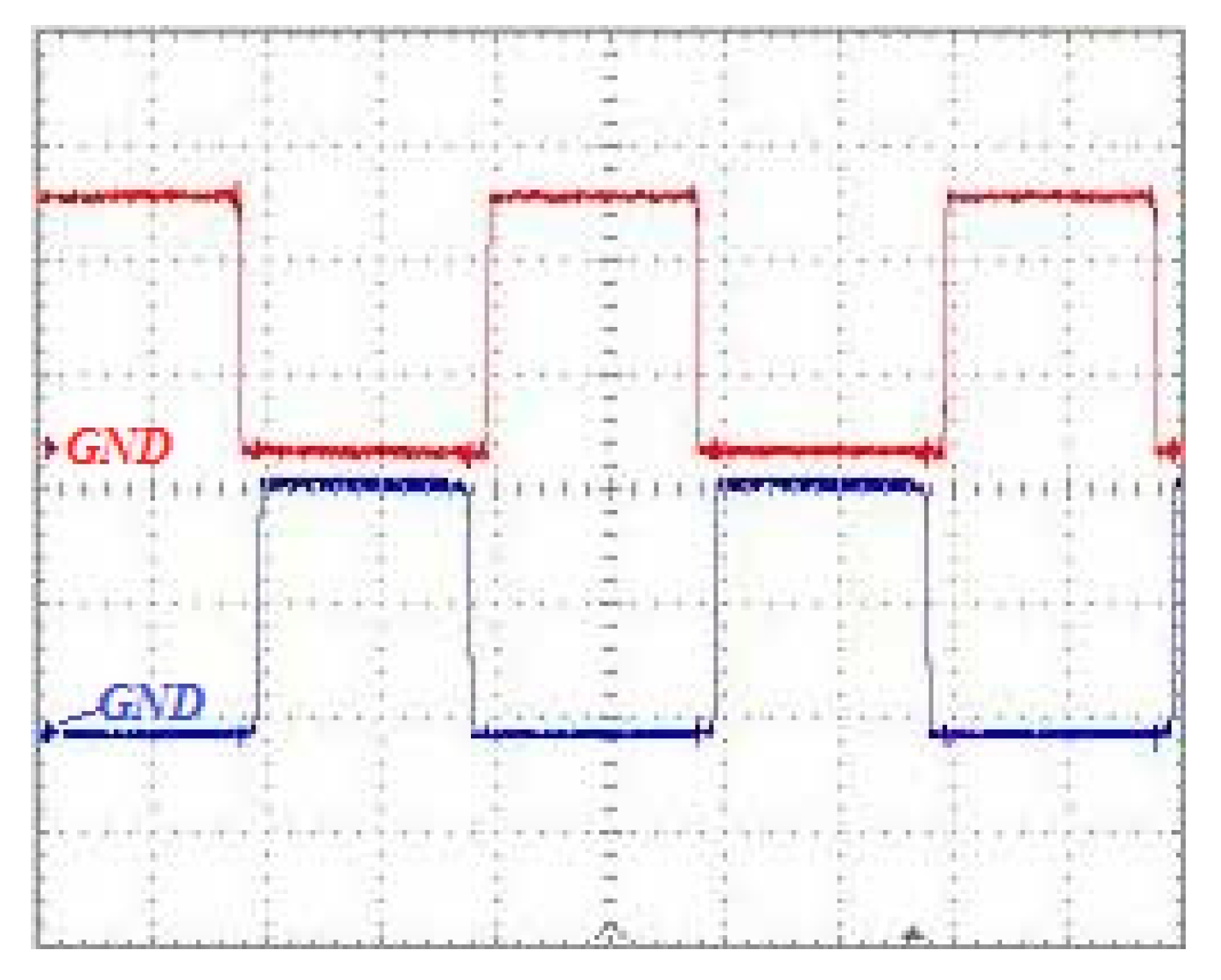
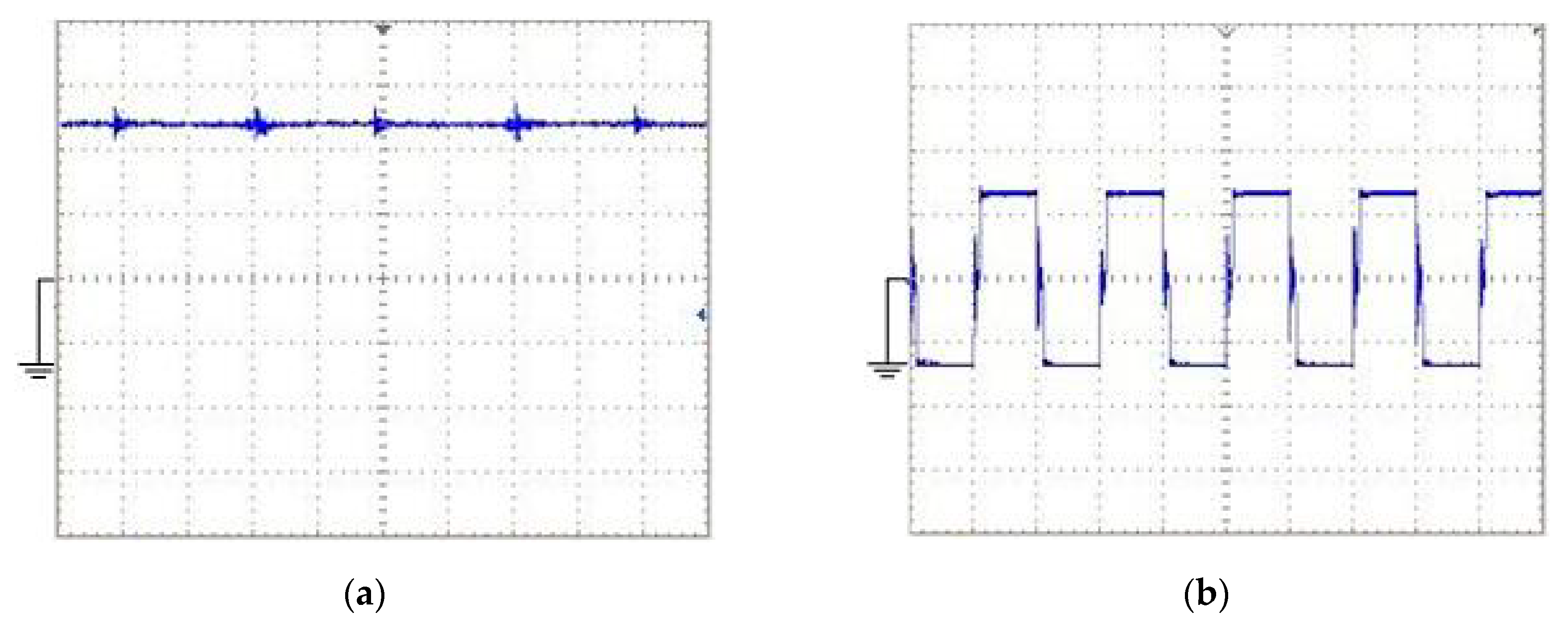
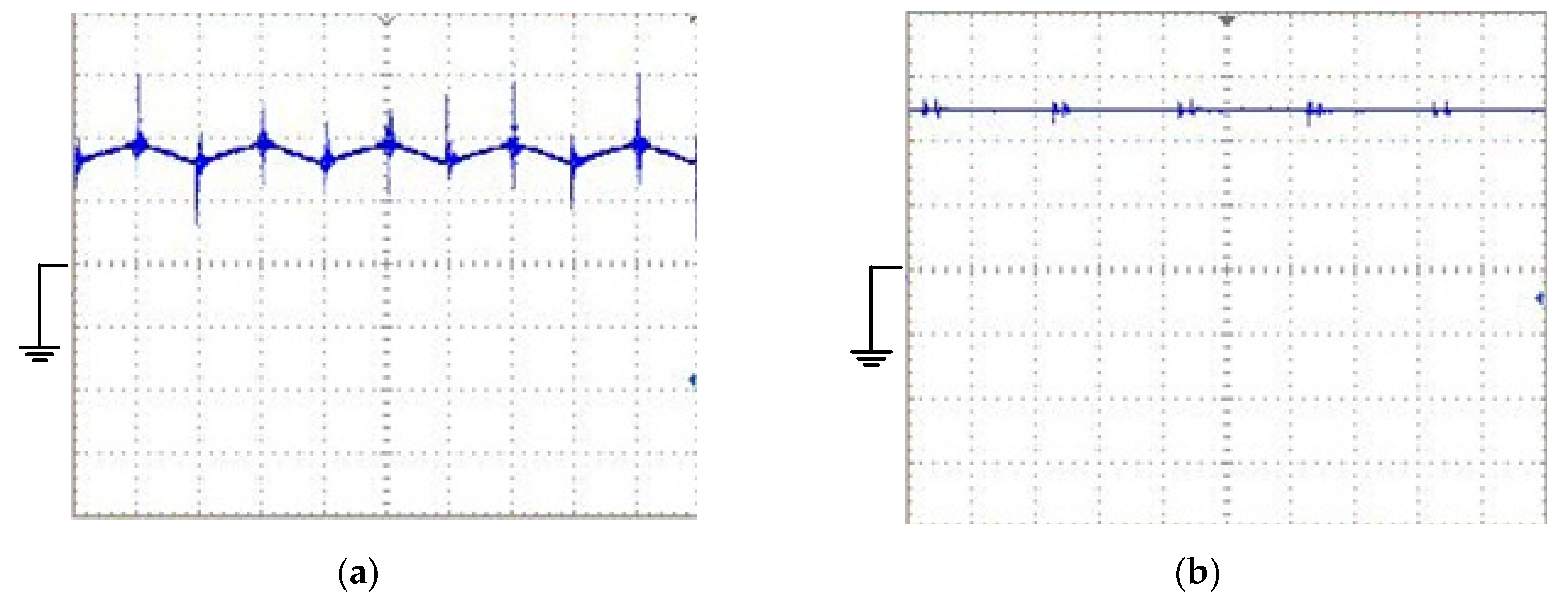
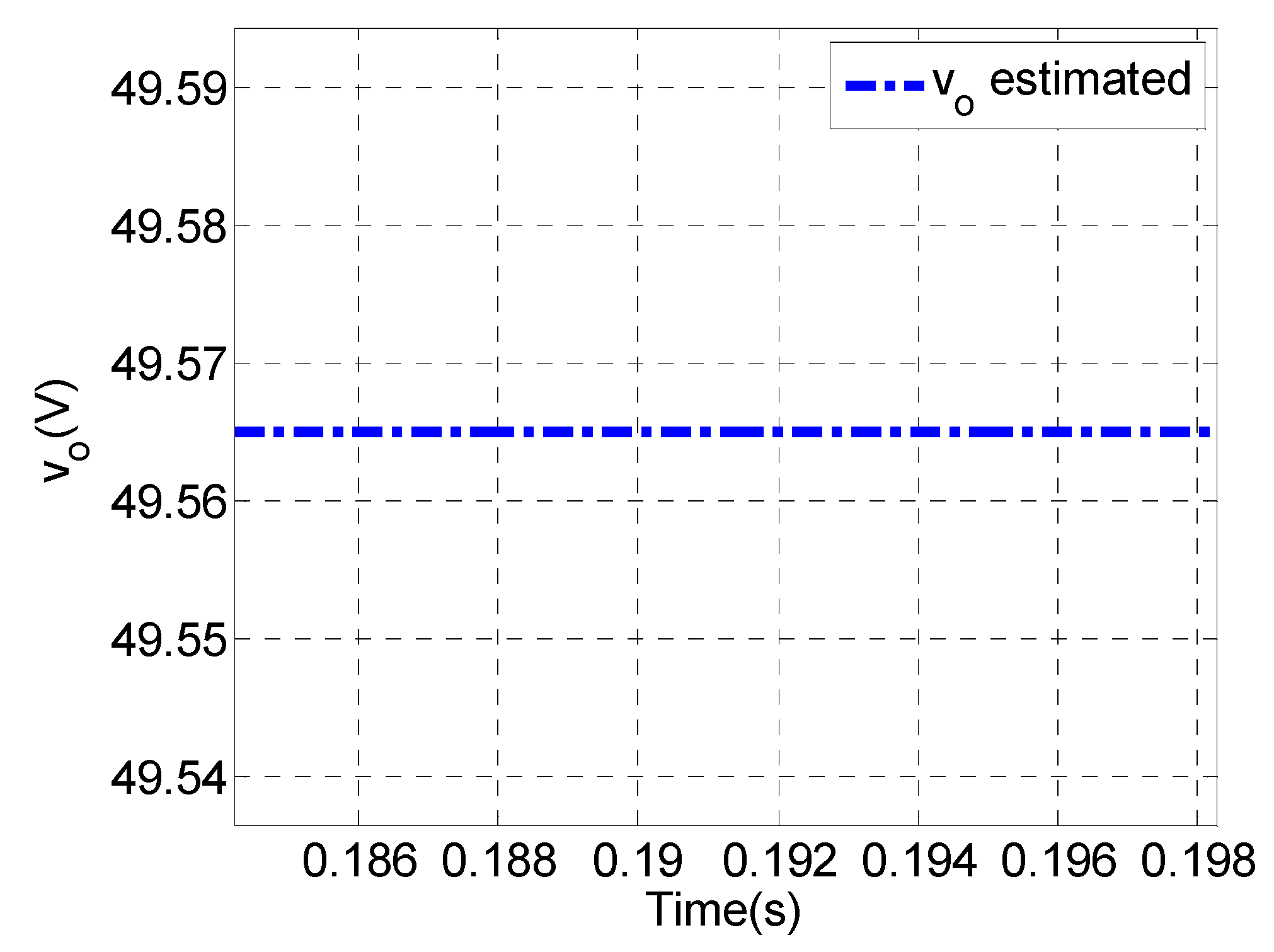
| Parameter | Value |
|---|---|
| Vin(Input Voltage) | 12 V |
| Vout(Output Voltage) | 50 V |
| fs(Switching Frequency) | 50 kHz |
| L1 | 2 mH |
| RL1 | 20 mΩ |
| L2 | 0.5 mH |
| RL2 | 20 mΩ |
| C1 & C2 | 220 μF |
| RC1 & RC2 | 0.1 Ω |
| RDS | 0.1 Ω |
| RD | 1 mΩ |
| VD | 0.8 V |
| Parameter | Value |
|---|---|
| Vin(Input Voltage) | 12 V |
| Vout(Output Voltage) | 50 V |
| fs(Switching Frequency) | 40 kHz |
| Ls | 650 μH |
| RLs | 20 mΩ |
| Lm | 650 μH |
| N1(Primary Winding Number of Turns) | 31 turns |
| N2(Secondary Winding Number of Turns) | 13 turns |
| RL1 | 20 mΩ |
| RL2 | 20 mΩ |
| Cb | 470 μF |
| RCb | 10 mΩ |
| Co | 990 μF |
| RCo | 10 mΩ |
| RDS | 0.1 Ω |
| RD | 1 mΩ |
| VD | 0.8 V |
Publisher’s Note: MDPI stays neutral with regard to jurisdictional claims in published maps and institutional affiliations. |
© 2020 by the authors. Licensee MDPI, Basel, Switzerland. This article is an open access article distributed under the terms and conditions of the Creative Commons Attribution (CC BY) license (http://creativecommons.org/licenses/by/4.0/).
Share and Cite
Haadi, K.; Rajaei, A.; Shahparasti, M.; Rahideh, A. Sensorless Voltage Observer for a Current-Fed High Step-Up DC-DC Converter Using Extended Kalman Filter. Electronics 2020, 9, 2066. https://doi.org/10.3390/electronics9122066
Haadi K, Rajaei A, Shahparasti M, Rahideh A. Sensorless Voltage Observer for a Current-Fed High Step-Up DC-DC Converter Using Extended Kalman Filter. Electronics. 2020; 9(12):2066. https://doi.org/10.3390/electronics9122066
Chicago/Turabian StyleHaadi, Karim, Amirhossein Rajaei, Mahdi Shahparasti, and Akbar Rahideh. 2020. "Sensorless Voltage Observer for a Current-Fed High Step-Up DC-DC Converter Using Extended Kalman Filter" Electronics 9, no. 12: 2066. https://doi.org/10.3390/electronics9122066
APA StyleHaadi, K., Rajaei, A., Shahparasti, M., & Rahideh, A. (2020). Sensorless Voltage Observer for a Current-Fed High Step-Up DC-DC Converter Using Extended Kalman Filter. Electronics, 9(12), 2066. https://doi.org/10.3390/electronics9122066








